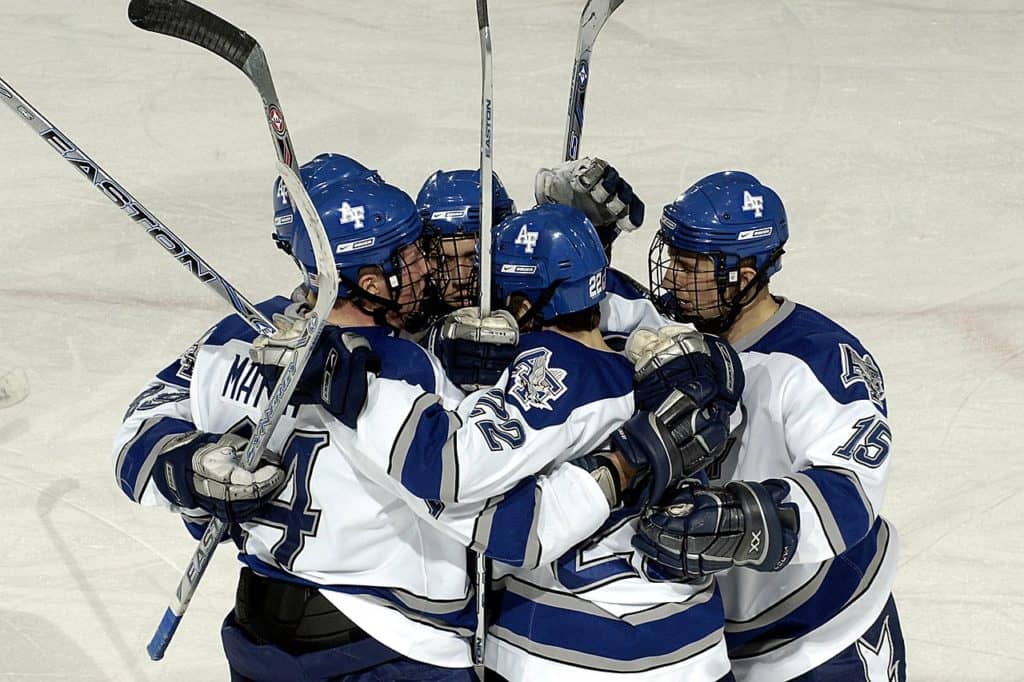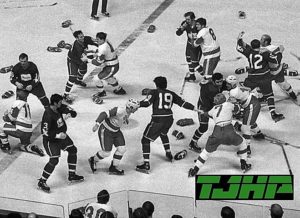No doubt COVID-19 is in the Hockey Community
Hockey is starting to gain national attention as a potential COVID-19 Super spreader activity. We have seen several reports since the end of August of various junior hockey teams throughout the country being affected by COVID-19. Including officials testing positive for the virus and having a massive ripple effect. A new publication in the Centers for Disease Control and Prevention (CDC) Morbidity and Mortality Weekly Report (MMWR) described how an indoor ice hockey game led to a Covid-19 coronavirus super-spreader event. There have also been other reports of outbreaks among ice hockey players including 18 members of the Yale men’s hockey team testing positive for the Covid-19 coronavirus over the past three days.
In the MMWR publication
David Atrubin, Michael Wiese, and Becky Bohinc from the Florida Department of Health detailed what happened after a recreational ice hockey game took place on a Tampa Bay, Florida, area indoor ice rink. When three members of a health department are describing an ice hockey game, there’s a decent chance that something went awry. The game pitted two 11-player teams against each other. The teams consisted of men from 19 to 53 years of age.
Now this game was played on June 16, 2020. That’s about three missed haircuts after the Covid-19 coronavirus pandemic was declared a pandemic. That’s about three months after public health experts began urging everyone to practice social distancing, you know the whole stay six feet or one Denzel (because Denzel Washington is about six feet tall) from each other at all times.
Hockey is not socially distancing
However, a regular ice hockey game, which is one without Covid-19 coronavirus precautions and what these guys apparently played for 60 minutes, is not social distancing. The only way to remain six feet apart while checking someone (which essentially is throwing your body at another person in a non-romantic way) would be to wear approximately 720 layers of clothing. That’s give or take some layers, depending on whether any of those layers are pads or Spanx. Plus, the players sat next to each other on the bench during the game and spent about 20 minutes before the game and 20 minutes after the game mixing and mingling.
Moreover, during an ice hockey game, there’s a lot of heavy breathing. Not because there is avocado toast around but because there can be lots of physical exertion. Deeper and more vigorous breathing can lead to more virus being expelled from your nose and mouth if the severe acute respiratory syndrome coronavirus 2 (SARS-CoV2) happens to be treating your body like a cheap motel.
The players didn’t wear face masks while playing either. Check that. Some wore standard ice hockey face masks. This included the ones that look like either grocery carts in front of the face (metal cages) or transparent Boba Fett masks (plastic half-shields). Such masks wouldn’t really block everything coming out of the players’ noses or mouths, except for perhaps gum or hot dog fragments. For a face mask to really protect others from you, it has to snugly cover your nose and mouth.
Again the game transpired in a indoor setting. Ice hockey isn’t typically played in a wind tunnel, so the air circulation wasn’t the same as it would have been outdoors. So to recap: indoor setting, people getting close to each other, heavy breathing, no masks. Not exactly the best setting to avoid the Covid-19 coronavirus.
Transmission and symptoms take time
It usually takes about four to five days after initial exposure to the SARS-CoV-2 before symptoms start emerging, although the incubation period can range from two to 14 days. Sure enough, within five days of the game, 14 players (eight from one team and five from the other) and a rink staff member began experiencing Covid-19-y symptoms. Thirteen of these folks ended up testing positive for the SARS-CoV-2. Only those who developed symptoms ended up getting tested. So more folks could have been infected.
The fact that members of both teams as well as a rink staff member got infected strongly suggests that virus transmission occurred sometime during the game or immediately before or after it as opposed to somewhere else in the community. Of course, this assumes that the two teams and the rink staff member don’t normally all hang out with each other.

This hasn’t been the only time the Covid-19 coronavirus seems to have taken itself to the rink. For example, on September 14, Carly Baldwin wrote for Patch about a cluster of 13 Covid-19 coronavirus infections among members of youth ice hockey teams that practice at the Middletown Sports Complex in Middletown, NJ. On October 6, Ariel Hart and Helena Oliviero reported for The Atlanta Journal-Constitution on a junior hockey league game between a team from Georgia and a team from North Carolina that have may have left over 40 people infected. Then, on Friday, Julia Bialek reported for the Yale Daily News that Yale University had moved its Covid-19 alert level up from green to yellow following the revelation that 18 members of the men’s hockey team has tested positive for the SARS-CoV2 over the previous three days.
This doesn’t mean that you have to necessarily get the puck out of here and completely forsake the game of ice hockey. The National Hockey League (NHL) was able to keep its Stanley Cup playoffs reasonably Covid-19 coronavirus free by placing their coaches and players in social bubbles and aggressively maintaining other virus prevention measures. Of course, such social bubbling may not always be a practical option for you.
Nonetheless, there are other possible adaptations. USA Hockey maintains a website on the Covid-19 coronavirus and offers a tip sheet on precautions that you can take. You can treat the game like a cheapskate in a restaurant and have a “no check” policy. That would mean maintaining at least a one Denzel distance from others at all times and not having any body contact. You can also get the puck outdoors, where there is more natural air ventilation, or at least make sure that extra steps are made to increase air circulation and filtering. Avoid sharing any equipment or touching the puck. Reducing the number of people on the ice at a time can also allow you to keep further apart at all times. Continue to maintain distance while off the ice. Doing each of these together in layered combination will further reduce your risk.












